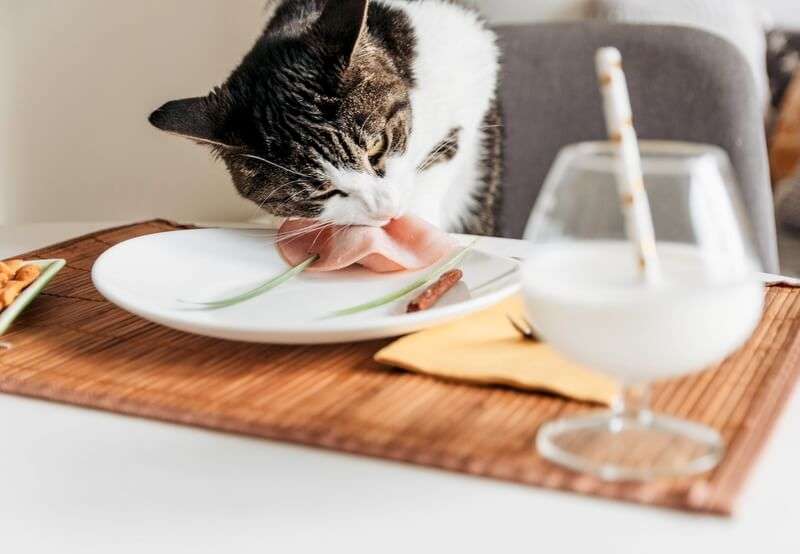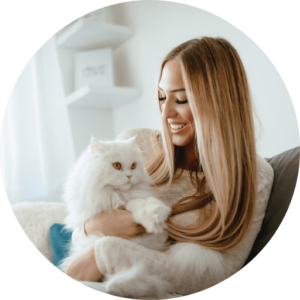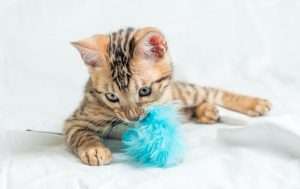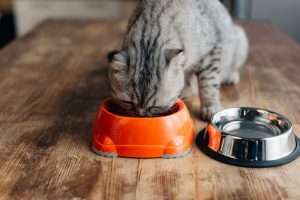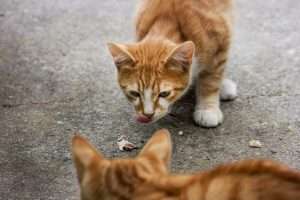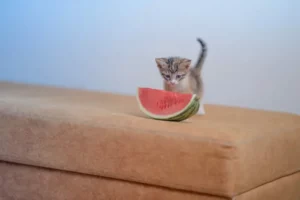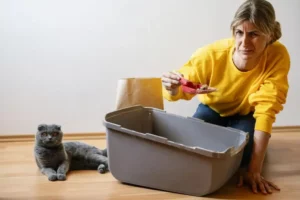Table of Contents
As a cat owner, it’s important to ensure that your feline friend is eating a balanced and healthy diet. While it may be tempting to give your cat table scraps or human food as a treat, it’s important to understand which foods are safe for cats to consume. One food that cat owners may wonder about is salmon skin. Can Cats Eat Salmon Skin? This article will provide an overview of whether or not cats can eat salmon skin and explore the potential risks and benefits of feeding it to your cat.
It’s important to note that many human foods can be toxic to cats and even small amounts can cause serious health problems. Cats have different nutritional requirements than humans, and their digestive systems are not designed to process certain foods. Therefore, it’s crucial for cat owners to have a clear understanding of what their feline friends can and cannot eat.
In this article, we’ll discuss the common misconception that cats can eat human food, the potential risks and benefits of feeding salmon skin to cats, and provide some alternative treats that are safer for feline consumption. By the end of this article, you’ll have a better understanding of what foods are safe for your cat to eat and how to provide them with a healthy and balanced diet.
The Nutritional Value of Salmon Skin
Salmon is a nutritious food that provides a variety of health benefits for both humans and cats. In particular, salmon skin is high in omega-3 fatty acids, which are essential for maintaining a cat’s overall health and wellbeing.
Omega-3 fatty acids are a type of polyunsaturated fat that play a crucial role in many bodily functions. They are particularly important for brain development and cognitive function, as well as maintaining a healthy coat and skin. Cats cannot produce omega-3 fatty acids on their own, which means they need to obtain them through their diet. Feeding your cat salmon skin can be a good way to ensure they are getting these important nutrients.
In addition to omega-3 fatty acids, salmon skin also contains other important vitamins and minerals that are essential for a cat’s health. For example, salmon skin is a good source of vitamin D, which helps to promote strong bones and teeth. It also contains vitamin B12, which is important for maintaining a healthy nervous system and producing red blood cells.
However, it’s important to note that while salmon skin can be a nutritious addition to a cat’s diet, it should not be the primary source of these essential nutrients. Cats require a balanced diet that includes a variety of protein sources, such as chicken or turkey, as well as other essential nutrients like taurine and vitamin A. Feeding your cat a diet that is primarily made up of salmon skin can lead to nutritional imbalances and health problems.
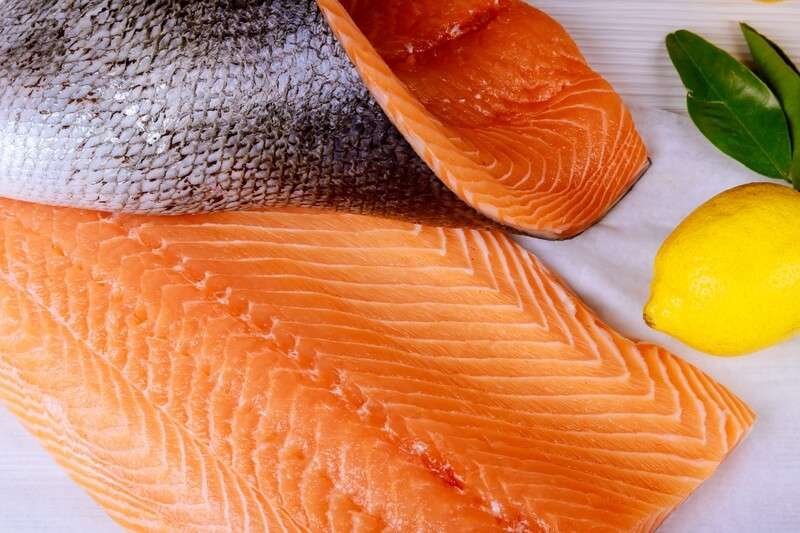
Can Cats Eat Salmon Skin?
Salmon skin is a popular seafood item among humans, but can it be given to cats? While salmon skin contains various essential nutrients, including omega-3 fatty acids, it is important to understand whether it is safe for feline consumption.
Many cat owners are unsure about whether or not they should feed salmon skin to their pets. It is important to remember that cats have different dietary requirements than humans, and not all human foods are safe for cats.
In general, feeding small amounts of salmon skin to your cat may be safe, but there are some potential risks to consider. One concern is the risk of choking, particularly if the salmon skin is not properly prepared or is given in large chunks. Another potential risk is the high fat content of salmon skin, which can cause digestive issues in some cats.
It is important to note that not all cats may react to salmon skin in the same way. Some cats may be able to digest it without any issues, while others may have adverse reactions. Therefore, it is always recommended to monitor your cat’s response to salmon skin and consult with a veterinarian if you have any concerns.
Additionally, it is important to consider the source of the salmon. If the salmon is contaminated with toxins or parasites, it can be harmful to your cat. Make sure to purchase salmon from a reputable source and properly prepare it before feeding it to your cat.
Overall, while salmon skin can provide some nutritional benefits to cats, it is important to exercise caution and monitor your cat’s reaction to it. It is always recommended to consult with a veterinarian before making any changes to your cat’s diet.
Preparing Salmon Skin for Cats
If you’ve decided to add salmon skin to your cat’s diet, it’s important to know how to prepare it safely. Here are some tips on how to do it:
- Remove Bones: Before cooking, make sure to remove any bones or cartilage from the salmon skin. These can be a choking hazard for your cat and may cause digestive issues.
- Cook Thoroughly: Raw salmon skin may contain harmful bacteria or parasites that can make your cat sick. It’s important to cook the salmon skin thoroughly before serving it to your cat. You can bake it in the oven, grill it, or pan-fry it. Just make sure it’s cooked all the way through and has a crispy texture.
- Avoid Seasonings: Cats don’t need added seasonings in their food, and some may even be harmful to their health. Avoid using any spices or herbs when preparing salmon skin for your cat.
- Incorporate into a Balanced Diet: While salmon skin can be a healthy treat for your cat, it shouldn’t be the sole component of their diet. Make sure to incorporate it into a balanced and nutritious diet that includes a variety of protein sources, fruits, and vegetables.
It’s also important to note that some cats may have an allergy to salmon or other types of fish. If your cat has never eaten salmon skin before, start with a small amount and monitor their reaction. If they show signs of an allergic reaction, such as vomiting or diarrhea, stop feeding them salmon skin immediately and consult your veterinarian.
By following these tips, you can safely prepare and incorporate salmon skin into your cat’s diet as a healthy and nutritious treat.

Alternative Treats for Cats
While salmon skin can be a healthy and enjoyable treat for cats, it’s important to offer a variety of treats and snacks to ensure a balanced diet. Here are some alternative treats that are safe and healthy for cats to eat:
Cooked chicken or turkey: These lean proteins are a great source of nutrition for cats and can be prepared in a variety of ways, such as boiled, grilled, or baked. Just be sure to remove any bones before serving.
Canned tuna or salmon: These fish are a great source of protein and omega-3 fatty acids, but should be given in moderation due to their high mercury content.
Cooked vegetables: Many cats enjoy vegetables such as green beans, peas, and carrots, which provide vitamins and fiber. Be sure to cook them thoroughly and avoid giving them in large quantities, as cats are obligate carnivores and require meat in their diet.
Commercial cat treats: There are many commercially available treats that are specifically designed for cats and are formulated with their nutritional needs in mind. Look for treats that are low in calories and don’t contain any harmful ingredients such as artificial colors or flavors.
When choosing treats for your cat, it’s important to consider their overall diet and ensure that the treats are not contributing to excessive calorie intake. A balanced and nutritious diet is essential for your cat’s health and wellbeing, so be sure to consult with your veterinarian if you have any questions or concerns about their diet.
The Verdict
In conclusion, it’s important to understand what foods are safe for your cat to eat in order to promote their health and wellbeing. While salmon skin can provide nutritional benefits for cats, it’s important to be cautious when feeding it to them and to ensure that it’s prepared properly. It’s always a good idea to speak with your veterinarian about your cat’s diet and to consider incorporating a variety of healthy and safe treats into their diet. Remember that a balanced and nutritious diet is essential for your cat’s overall health and happiness. By being mindful of what you’re feeding your cat, you can help ensure that they live a long and healthy life.


